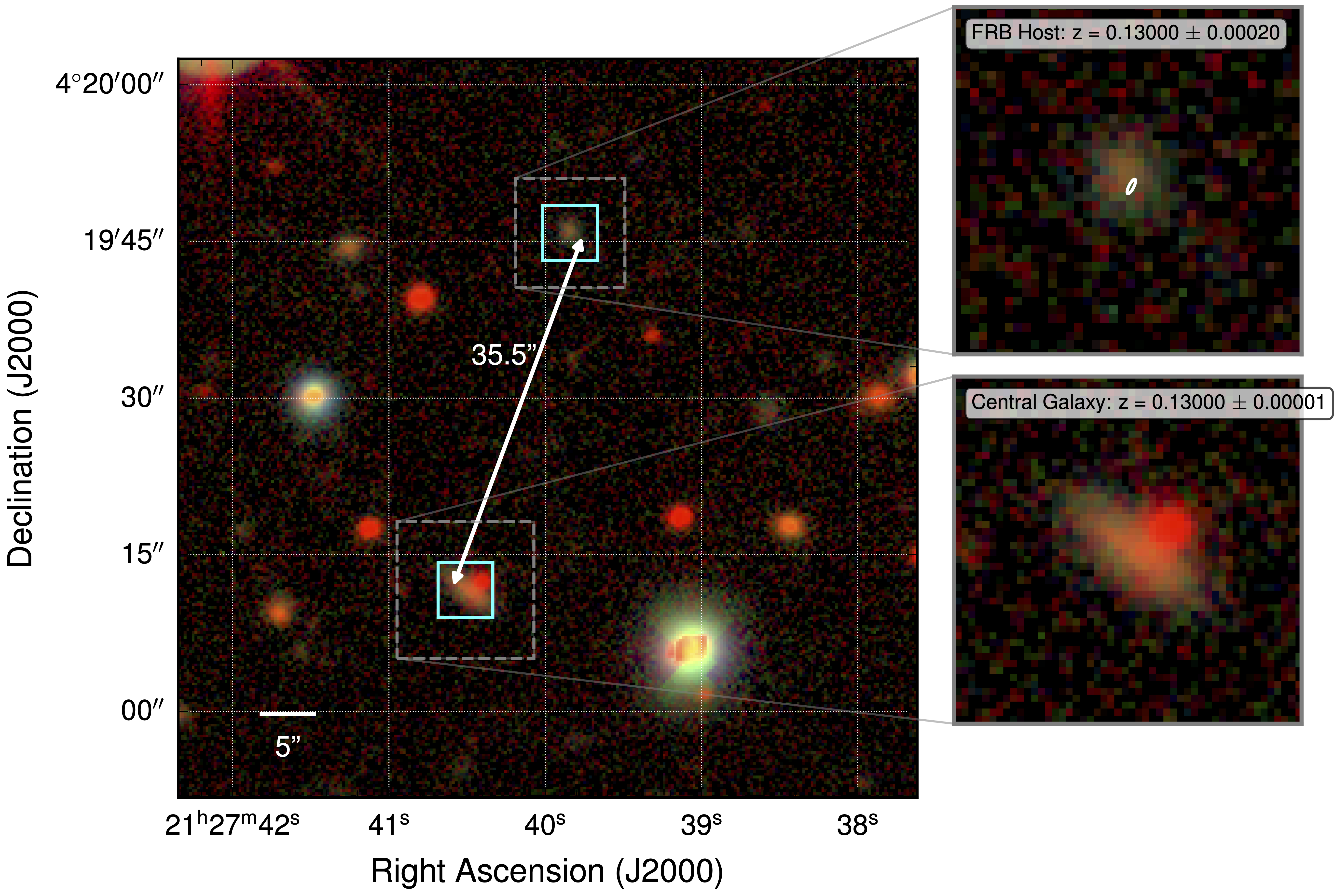 June 16, 2025
June 16, 2025
Precise localizations of fast radio bursts (FRBs) are essential for uncovering their host galaxies and immediate environments. We present the milliarcsecond-precision European VLBI Network (EVN) localization of FRB 20240114A, a hyper-active repeating FRB, achieving <90x30 mas (1-sigma) accuracy. This precision places the burst 0.5 kpc from the nucleus of its low-metallicity star-forming dwarf host at a spectroscopic redshift of z = 0.1300. Our Gran Telescopio CANARIAS (GTC) spectroscopic follow-up reveals that the dwarf FRB host is gravitationally bound to a more massive, star-forming spiral galaxy. This establishes the first known instance of an FRB residing in a satellite galaxy within a larger galactic system. This configuration, analogous to the Small Magellanic Cloud orbiting the Milky Way (but at a lower overall mass scale), expands the known diversity of FRB host environments and offers important insights for interpreting seemingly 'hostless' or highly offset FRBs. Furthermore, our detailed dispersion measure (DM) budget analysis indicates that the dominant contribution to FRB 20240114A's DM likely originates from the foreground halo of the central galaxy. This finding addresses the anomalously high DM observed for this FRB and underscores the significant role of intervening foreground structures in shaping observed FRB DMs, which is important for accurate FRB-based cosmological measurements. Our results highlight the importance of deep, high-resolution optical/infrared observations' (e.g., with Hubble or James Webb Space Telescopes) to fully leverage our precise radio localization and probe the immediate astrophysical birthplaces of FRB progenitors within these complex galactic systems.
Snelders, M. P., Bhardwaj, M., et al. 2025, arXiv.
